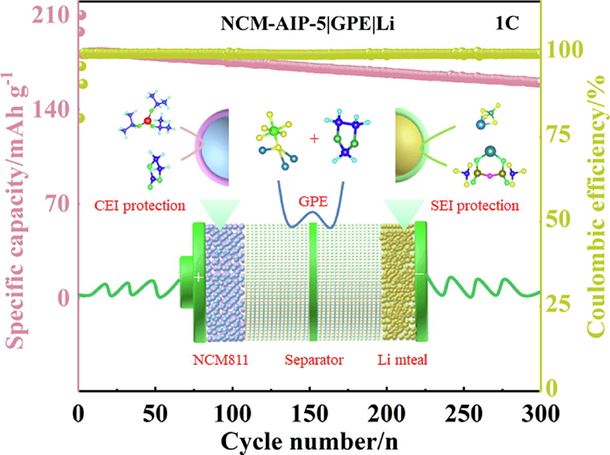Highly adaptable SEI/CEI interfacial layers enabling remarkable performance of high-nickel solid-state batteries
Volume 64, Issue , Page 21–30
| Yongjiang Sun, Shimin Wang, Qi An, Lingyan Duan, Genfu Zhao, Changhong Wang, Kieran Doyle-Davis, Hong Guo, Xueliang Sun
Abstract
Designing a robust cathode electrolyte interphase (CEI) on a high-voltage cathode and stable solid electrolyte interphase (SEI) on a Li anode is the key to success in developing solid-state Li metal batteries (SSLMBs). In this work, we design an inorganic compound-intensive CEI layer and a LiF-rich gradient SEI layer in SSLMBs through the in-situ polymerization of a novel multi-functional electrolyte. The inorganic compound-intensive CEI offers excellent electrochemical compatibility with high-voltage layered cathode LiNi0.8Co0.1Mn0.1O2 (NCM), while the LiF-rich gradient SEI successfully suppresses Li dendrite formation and harmful interfacial parasite reactions. As a result, SSLMBs present a remarkable rate performance of 182 mAh g−1 at 1 C and a long cycling stability of 88.6% capacity retention after 300 cycles at room temperature. The fundamental insights into interface chemistry and facile strategy demonstrated in this work could assist the rapid development of SSLMBs toward remarkable performance.
 Dual CEI/SEI protection layers formed by an inducing strategy are successfully realized for optimizing the stability of electrolyte/electrode interfaces and further improving the rate performance and cycling stability of SSLMBs.
Dual CEI/SEI protection layers formed by an inducing strategy are successfully realized for optimizing the stability of electrolyte/electrode interfaces and further improving the rate performance and cycling stability of SSLMBs.See full text for more information.
Read full text on ScienceDirect
DOI: 10.1016/j.mattod.2023.02.011
Share this journal article